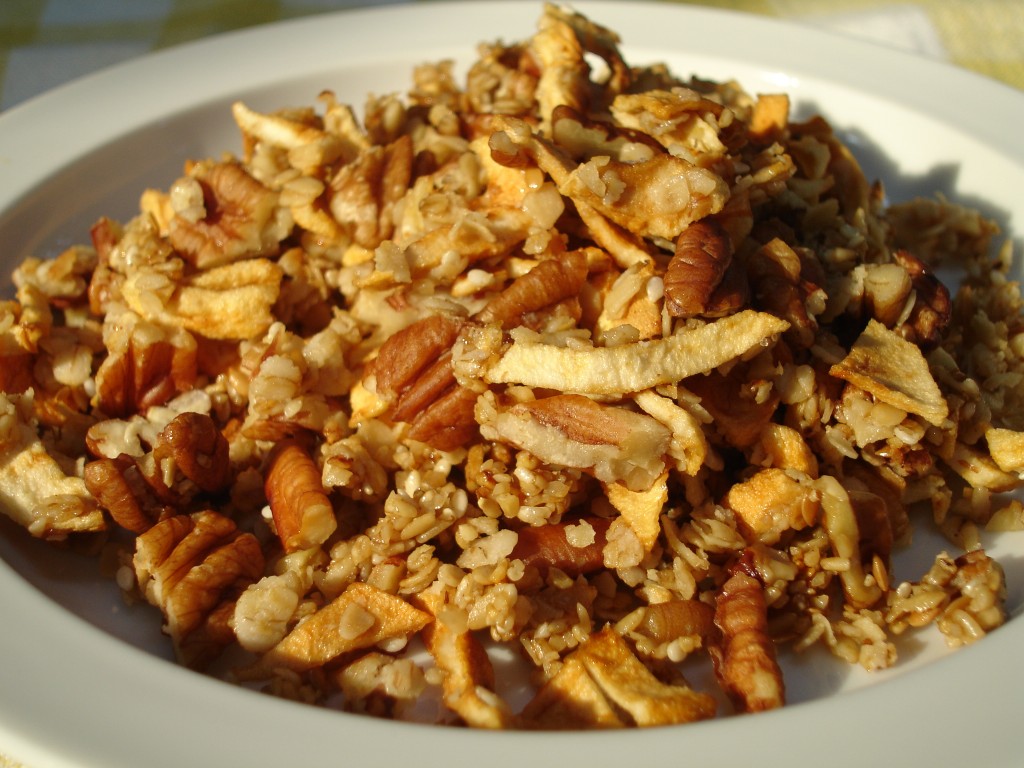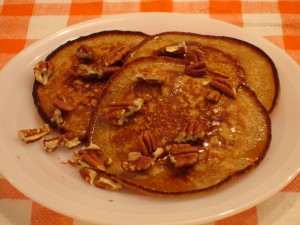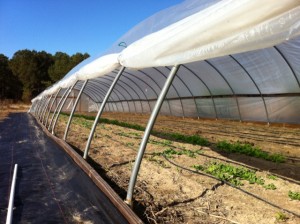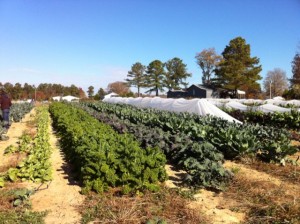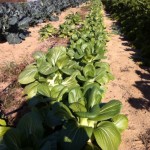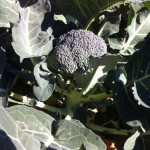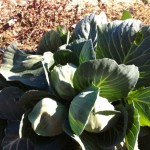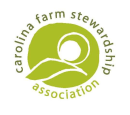Originally published 8/9/2010
This lovely 20 acre farm is part of the Emerson Waldorf School in Chapel Hill, NC. It is just a short walk on a wooded path from the school’s main campus. The school has just over 50 wooded acres.
 Primary school is out of session for summer, but there is still a flurry of activity with summer camps. The garden has a number of volunteers overseeing the summer crops and getting ready for fall plantings in newly prepared beds.
Primary school is out of session for summer, but there is still a flurry of activity with summer camps. The garden has a number of volunteers overseeing the summer crops and getting ready for fall plantings in newly prepared beds.

At the front of the driveway to the farm there is a simple painted sign marking the entrance. The path to the actual garden is marked with another larger hand-painted sign at the parking area. You instantly feel at home when you get out of your car and put on your sun hat.

There are a couple of small buildings on the site that provide teaching space and storage for vegetables and tools. Everything about this garden is relaxed.
I first visited this school back in the mid 1990’s and I was pleasantly surprised by all of the  changes that I saw this summer. Since its inception in 1984, the school has embraced multi-sensory learning and if you would like to know more about the education model used here, I encourage you to visit two sites for more details:
changes that I saw this summer. Since its inception in 1984, the school has embraced multi-sensory learning and if you would like to know more about the education model used here, I encourage you to visit two sites for more details:
http://www.emersonwaldorf.org/about/ http://www.whywaldorfworks.org/
 The main purpose of this garden is “to help students and parents find a responsible balance between nature and technology” in a culture that would have them rarely going outside. There are places for all ages of children to work and play.
The main purpose of this garden is “to help students and parents find a responsible balance between nature and technology” in a culture that would have them rarely going outside. There are places for all ages of children to work and play.
As you come up to the actual garden from the path you notice that this is a utilitarian garden.  The fencing is simple, the arbors are made of found materials, and access to several piles of compost is undisguised and right within reach. One of the few man-made objects is an umbrella to provide a bit of shade during the long hot days. There is a play area just under a tree for younger children to dig and pretend to garden while older students and their parents work close by.
The fencing is simple, the arbors are made of found materials, and access to several piles of compost is undisguised and right within reach. One of the few man-made objects is an umbrella to provide a bit of shade during the long hot days. There is a play area just under a tree for younger children to dig and pretend to garden while older students and their parents work close by.
 The main portion of the garden is divided very simply into rows with different sections for pollinator flowers, root veggies, leafy greens and tomatoes. There is also a section for home-made compost at different stages and that was being used to prepare a bed for a fall planting when I was visiting. This garden is new enough that all of the soil must be tilled and then amendments added in by hand to increase the viability of the land. It will take years and many volunteers and school classes before the land produces its best crops.
The main portion of the garden is divided very simply into rows with different sections for pollinator flowers, root veggies, leafy greens and tomatoes. There is also a section for home-made compost at different stages and that was being used to prepare a bed for a fall planting when I was visiting. This garden is new enough that all of the soil must be tilled and then amendments added in by hand to increase the viability of the land. It will take years and many volunteers and school classes before the land produces its best crops.
The garden is fairly flat so irrigation hoses are woven between the rows to help with our extreme early heat this year. Signage is rudimentary and easily moved as the crops change over the weeks. Weeds that are not overtaking plants are left alone since the volunteers are limited and working in 90+ weather can be dangerous. No chemicals are used so that students can observe nature at its best and worst. Everything about this garden is simplistic.
Much of the summer harvest is sent home with volunteers but in the fall, the harvest will be put into a school farmers market. Parents can pick up fresh vegetables when they come to pick up their children. Students and parents help with the entire process from picking, cleaning, and sorting, to managing sales. Every aspect of this garden provides hands-on experience and valuable life lessons.
If you have an interest in volunteering at this garden or you would like to make a monetary or plant donation, please contact the school directly. They would like to add berry bushes and some additional fruit trees and will probably be in need of some garden tools, wheel-barrels and hoses as they expand.
You can contact the school at mainoffice@emersonwaldorf.org
http://www.emersonwaldorf.org/about/
http://www.emersonwaldorf.org/community/ews-farm/

